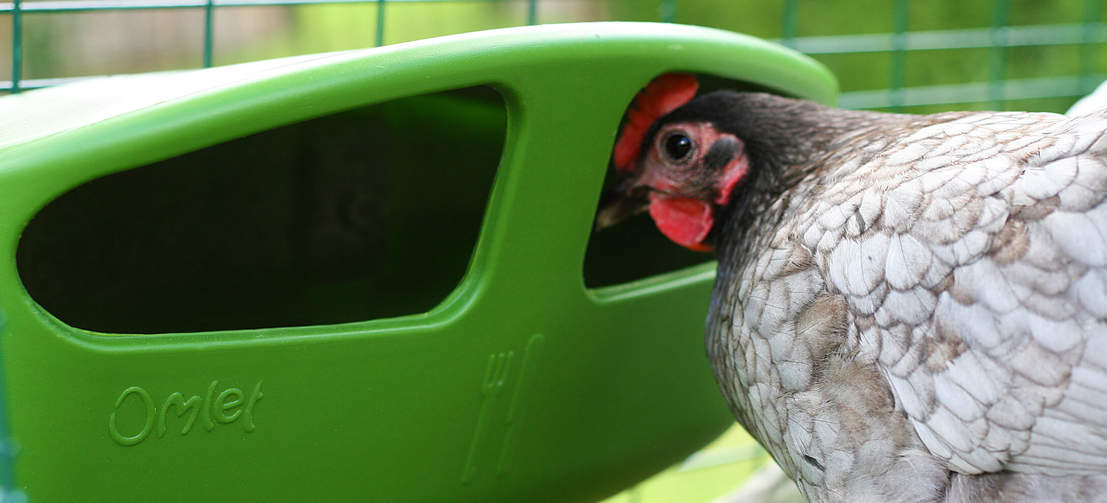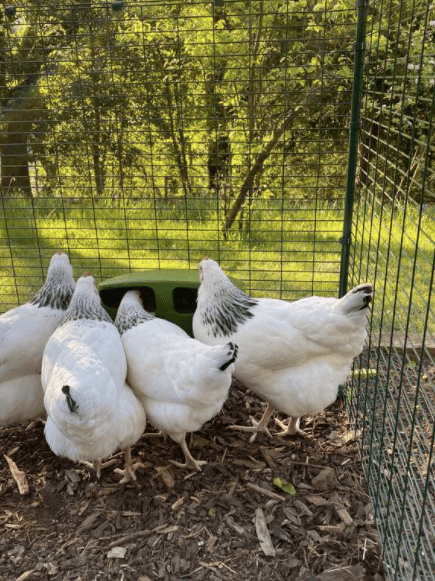How Much Should I Be Feeding My Chickens?

Chickens are great foragers, and free-range birds will peck and scratch for all kinds of wild treats, from grass and weeds to worms and beetles. However, even a hen with all-day access to a garden or meadow still needs to be fed with high-quality layers pellets. These contain the correct balance of protein, carbohydrate, vitamins and minerals (notably calcium for egg shells) that will keep them happy and healthy. Protein is particularly important for healthy egg production.
A general ballpark figure is very useful, to guarantee that the hens’ dietary requirements are being met. For medium-sized breeds such as the Rhode Island Red, Oxford Brown or Orpington, you need to feed between 115 and 120 grams (just over a quarter of a pound) of feed per chicken per day, which is 805 to 840 grams (one and a half pounds) of feed per chicken per week. A slightly larger Sussex will eat a bit more, and the smaller Leghorn will eat slightly less, while a small bantam breed will only eat between a half and three quarters of that amount.
Chicks, Pullets and Layers
Until it is five weeks old, a chick will need to have its diet supplemented with protein-rich ‘chick crumbs’. Between then and 18 weeks old, while they are ‘pullets’, the birds will need ‘growers pellets’ to put on weight. As soon as the hens begin laying, they only need the regular ‘layers pellets’. These, again, are rich in protein, calcium and all the other essential nutrients.
The hens will also need daily access to grit. Treats are fine, as long as they are not being offered so frequently that the hens fail to eat their share of pellets. Corn is a healthy treat, and birds that have free-range access to grass will be in chicken heaven.
How Can You Make Sure Each Hen is Getting Her Share of the Food?
Any flock of chickens develops a natural pecking order, and the dominant birds will tend to eat their fill before the others, if there is not enough space for all the hens to fill their crops at once (something they like doing shortly before retiring for the night). A solution here is to buy a wide-bottomed feeder that allows several birds to eat at once, or to use more than one feeder. This will ensure the timid hens get their fair share of food.
However, as long as you have provided enough for all your hens, there should always be food left in the feeder when the dominant birds have had their fill. You should still keep a close eye on the health of your flock, though. Issues such as soft shells or feather-plucking can be signs of dietary deficiencies, and the problem might lie in the quality rather than the quantity of the birds’ diet.
Do Hens Eat the Same Food All Year Round?
Chickens moult every year, and will usually eat more food during this process, to ensure their bodies have all the protein they need to grow a new set of feathers. Hens usually eat more during cold weather, too, in order to fuel their metabolisms and stay warm. Free-range hens also tend not to find as many treats in the garden during the winter, as the insect population is at low ebb and the grass is no longer growing.
You can add a little more food each day during these periods. You will soon know if you are giving them too much or too little, by noting the amount of pellets left in the feeder each evening.
However, the hens produce fewer eggs in the winter, so all in all the amount of protein-rich pellets required does not differ significantly from season to season. Again, the key detail is to ensure a regular supply of food. In the summer, if your hens appear to be eating very little, it may be because they are finding too many good things on their foraging trips in the garden. This can be a problem if the wild food they are filling up on doesn’t provide the right balance of nutrients. You might want to confine a hen to the coop if she doesn’t seem to eat enough pellets. That way, she will be forced to eat the good stuff rather than the garden treats.
Layers pellets should be available to your hens throughout the day – they will eat as much as they need, and will not behave like a dog, eating everything at once simply because it’s there!
This entry was posted in Chickens
